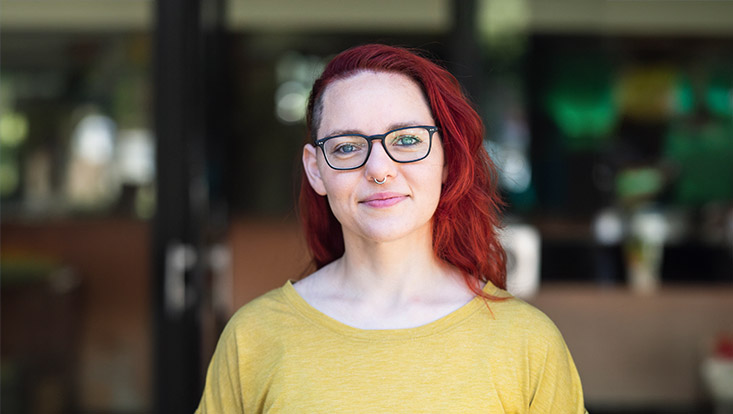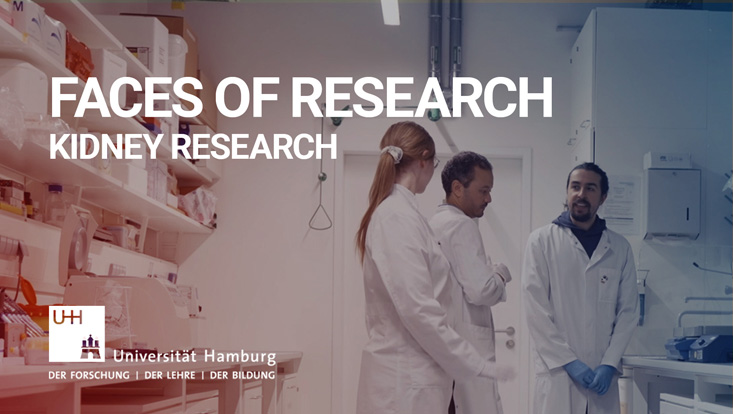Carbonization instead of incinerationFrom Sewage Sludge to Slow-Release Fertilizer and CO₂ Storage
10 October 2024, by Lennart Wichmann

Photo: University of Hamburg / Feuerböther
Dr. Maria-Elena Vorrath, a geoscientist at the University of Hamburg, is developing a sustainable and inexpensive fertilizer from human feces for agricultural use—an approach that is good for the climate and for which the researcher has acquired €30,000 of funding.
The material for Dr. Maria-Elena Vorrath’s Superchar project comes in black, crusty pieces. However, the rather inconspicuous and odorless substance has an unexpected origin. “It’s dried feces from the sewage treatment plant,” says the scientist from the Department of Earth System Sciences at the University of Hamburg.
After the sewage sludge has been processed, the feces are dried. Vorrath receives the feces from a sewage treatment plant in Südholstein. Normally, the material is incinerated, enabling the recovery of various nutrients such as phosphorus but also resulting in large greenhouse gas emissions. This is where the Superchar project comes in.
“I am researching how the resulting coal can be used agriculturally, as it can store CO₂ for at least 1,000 years and can also be used as an effective and inexpensive fertilizer,” says Vorrath. The coal also loosens the soil, binds nutrients, and can thus improve soil quality. For her project, Vorrath has teamed up with Novocarbo GmbH, Goldeimer gGmbH, and Carbon Collectors gGmbH from Lower Saxony.
Superchar: Coal as a fertilizer
A similar research approach was supported last year with €80,000 from the Klaus Tschira Booster Fund. Now it has been awarded €30,000 through Hamburg Innovation’s Calls for Transfer (C4T) program. Especially with regard to the joint development of innovations with external companies, funding is essential for the progress of their project. “Good ideas for innovations are published in scientific publications, but rarely find their way into practice. This is achieved through collaboration between research and investing companies, which also benefit from the results,” explains the Vorrath. Thanks to the financial support of the companies and their willingness to share the equipment, the research team can determine how big an effect the CO₂-storing fertilizer would have for agriculture.
A detour into earth and climate research
Maria-Elena Vorrath has many different interests. After leaving school, she initially decided to train as a sound engineer and then studied musicology at the University of Hamburg. The turning point came at the age of 26, when she began studying geosciences, also at the University of Hamburg. Her path led her to the Alfred Wegener Institute—Helmholtz Centre for Polar and Marine Research, where she specialized in climate science and completed her doctorate. She focused her research during several expeditions, including to the Antarctic, where she studied the boundaries of climate and environmental change. Vorrath completed her doctorate in 2020 and was awarded a scholarship for marine research in the same year.
About three years ago, she came into contact with her current field of research, weathering, for the first time “The fascinating thing about weathering is that it involves natural processes that take a very long time. And the coal that we burn in power plants is several million years old. By introducing rock flour and coal into the soil together, we can accelerate the processes of CO₂ storage and improve the soil,” explains Vorrath enthusiastically. Her work at the interface of geosciences and climate science provides valuable findings for future ecological strategies.
“Technology cannot solve everything”
However, relying solely on technology to get closer to the climate target would be a big misunderstanding. “Only a combination of drastically reducing emissions and innovative technology will stop the climate crisis. Global politics must come round and make the right decisions.” That is why Vorrath is keen to share her research findings with the public.
At science slams, she gives talks with titles such as “Olivine against climate change? That’s not a solution,” “Hacking the climate,” and “Yesterday's snow and what it tells us about the climate.” In an entertaining and informative manner, she uses various formats to explain her research and the science-based solutions that ensure that climate targets are met. “I want people to see and hear what I do. The most important thing is my communication.” And what’s next for Superchar? In November, the team should be carrying out the first experiments and measurements. For this purpose, they will first have a company convert the small, crusty remains into pellets.


